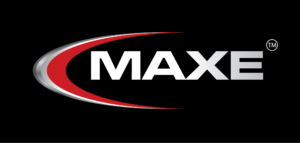Technical Information
Using Stainless Steel
On Powder Coated Parts
The use of stainless steel on the powder-coated components as opposed to the industry standard of using Mild steel on powder-coated parts is discussed below.
Corrosion resistance is of particular importance for exterior vehicle accessories, particularly along coastal regions. Stainless steel is the material of choice when it comes to corrosion resistance. The versatility of the material allows it to be used in everything from Elon Musk’s Starship to everyday eating utensils and cutlery. In general, powder-coated vehicle accessories have in the past had Mild steel as the base material. Mild steel is a much cheaper material by weight but has very poor corrosion resistance. Using stainless steel as the base material allows us to exceed 1000h salt spray corrosion testing on powder-coated components as opposed to the comparatively low number of salt spray hours from powder-coated mild steel parts. The move to standardise the use of stainless steel also means we reduce the use of mild steel in the manufacturing process and therefore reduce the risk of the stainless steel being contaminated by mild steel. All of this increases the overall longevity and quality of our products.
“Using stainless steel as the base material allows us to exceed 1000h salt spray corrosion testing on powder coated components as opposed to the comparatively low number of salt spray hours from powder coated mild steel parts.”
Testing of Nudge Bars
To ensure Airbag compatibility
As the incorporation of airbags into the safety restraint system (SRS) became more prevalent MAXE identified the need to ensure our product did not negatively impact the vehicle safety system. In 2011 the most appropriate technology available was the physical pendulum test. The product would be mounted to a large pendulum test rig. The weighted pendulum would be lifted to a very specific height to ensure the correct momentum at the point of impact with the bar. The resultant accelerometer and strain measurements would be analysed to verify airbag compatibility. In recent years we have seen an increase in sensors incorporated in the overall SRS such as radar/lidar systems, Ultrasonic Park Distance Control (PDC) sensors, Panoramic view modules (PWM) or wide-angle cameras, etc. As these safety systems start to become more prevalent MAXE continues to ensure that our products do not negatively affect the overall safety systems. As technology improves we are moving towards complete virtual testing with the help of CAE (Computer Aided Engineering) techniques such as FEA (Finite Element Analysis). These allow us to produce results in line with the physical strength, durability and impact test but right at the early concept stages of the design and receiving results in a fraction of the time and at a fraction of the cost all the while improving the overall quality and customer satisfaction of our products.
“In 2011 the most appropriate technology available was the physical pendulum test. The product would be mounted to a large pendulum test rig. The weighted pendulum would be lifted to a very specific height to ensure the correct momentum at the point of impact with the bar.”
Durability Testing
For Overall Durability
In 2014, MAXE identified the need to test our products not just for their strength but also their overall durability. In collaboration with local specialists we began durability testing our products to ensure our products would outlast the vehicle they were placed on. This proved so successful MAXE invested in the technology and installed an in-house durability test rig in 2016. Working with our OEM customers we were able to develop a very specific set of test specifications that would ensure that our products are tested to realistic conditions. The specification of each test varies depending on the product but in general the products are subjected to around 2 million cycles of roughly 6 times the force of gravity at the resonant frequency of the bar. What this all means is that if the bar can withstand the MAXE durability test then there can be no doubt that it can handle the wear and tear it will experience on the many happy years in service.
“MAXE invested in the technology and installed an in-house durability test rig in 2016 after the successful project to test overall durability strength in 2014″
Choose your vehicle
Let us help you find the correct accessory for your vehicle or truck.
Add yourself to our database and be one of the first to know about any exciting news at MAXE.
